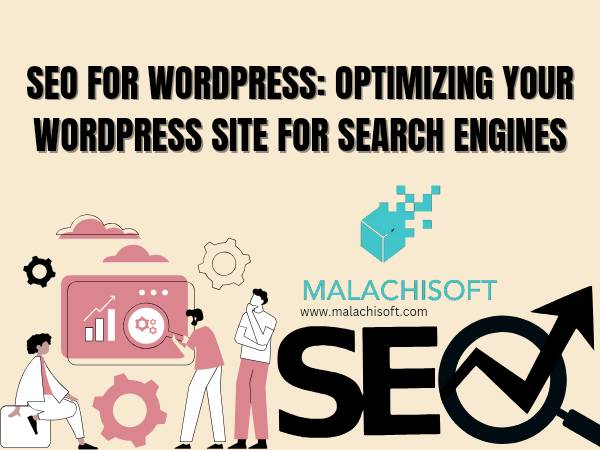Introduction:
In the vast digital landscape, having a strong online presence is crucial for the success of any website. Search Engine Optimization (SEO) plays a pivotal role in ensuring that your WordPress site not only ranks well on search engines but also attracts the right audience. In this blog, we’ll delve into the key aspects of SEO for WordPress, providing you with actionable tips to optimize your site and boost its visibility.
- Choose a SEO-Friendly WordPress Theme:
The foundation of a well-optimized WordPress site begins with the theme. Opt for a responsive and SEO-friendly theme that ensures a seamless user experience across devices. A clean and well-coded theme can significantly impact your site’s loading speed, a critical factor for search engine rankings. - Optimize Permalinks and URL Structure:
WordPress allows you to customize your permalinks, making it important to include relevant keywords. Set your permalink structure to be both user-friendly and search engine-friendly. Avoid generic URLs with numbers and instead, use descriptive URLs that provide a clear indication of your content. - Keyword Research and Implementation:
Conduct thorough keyword research to understand what terms your target audience is searching for. Integrate these keywords naturally into your content, titles, headings, and meta descriptions. However, be mindful of not overstuffing your content with keywords, as this can be counterproductive. - Create Quality and Engaging Content:
Content remains king in the world of SEO. Craft high-quality, informative, and engaging content that caters to the needs of your audience. Regularly update your site with fresh content, as search engines favor websites that provide valuable and up-to-date information. - Optimize Images for SEO:
Visual content is essential, but it’s equally important to optimize images for SEO. Compress images to reduce file size, add alt text with relevant keywords, and use descriptive file names. This not only improves your site’s loading speed but also enhances its visibility in image searches. - Improve Site Speed:
Site speed is a critical factor in SEO rankings. Use tools like Google PageSpeed Insights to analyze and enhance your site’s performance. Consider implementing caching, optimizing images, and leveraging Content Delivery Networks (CDNs) to ensure a faster and smoother user experience. - Utilize SEO Plugins:
WordPress offers a variety of SEO plugins that can simplify the optimization process. Plugins like Yoast SEO or All in One SEO Pack provide valuable insights, help in optimizing on-page elements, and guide you in creating search engine-friendly content. - Ensure Mobile Responsiveness:
With an increasing number of users accessing the internet via mobile devices, having a mobile-responsive site is imperative. Google prioritizes mobile-friendly websites, so make sure your WordPress theme is responsive, and your content is optimized for various screen sizes. - Build Quality Backlinks:
Earn high-quality backlinks from reputable websites within your industry. Backlinks are a significant ranking factor, and a well-thought-out link-building strategy can positively impact your site’s authority and visibility in search engine results. - Regularly Monitor and Analyze Performance:
Keep a close eye on your site’s performance using tools like Google Analytics. Monitor changes in rankings, user behavior, and site traffic. Use this data to make informed decisions and continuously refine your SEO strategy.
Conclusion:
Optimizing your WordPress site for search engines is an ongoing process that requires dedication and attention to detail. By implementing the strategies outlined above, you can enhance your site’s visibility, attract organic traffic, and ultimately improve its overall performance in search engine rankings. Stay informed about the latest SEO trends, adapt your strategy accordingly, and watch your WordPress site thrive in the competitive online landscape.
